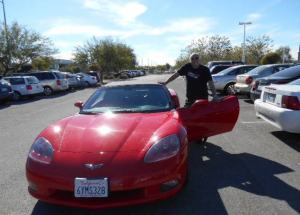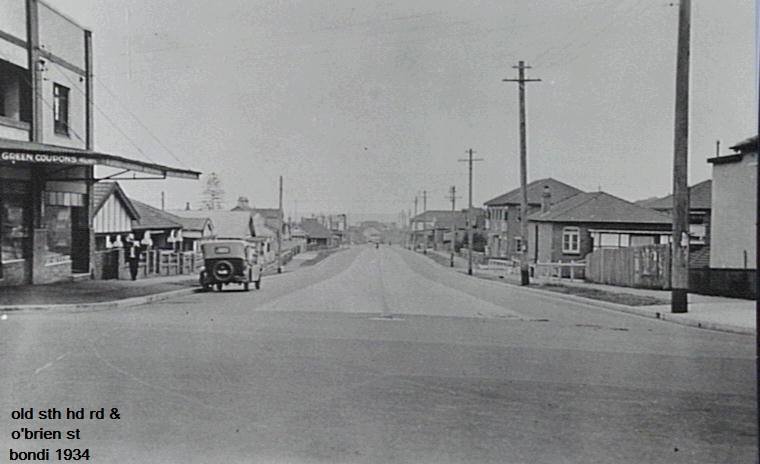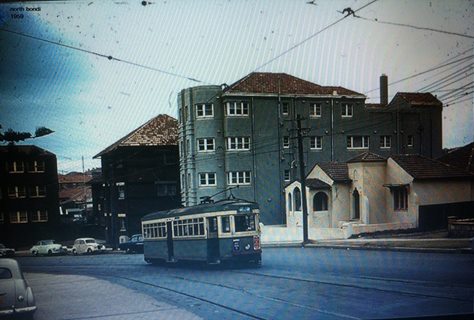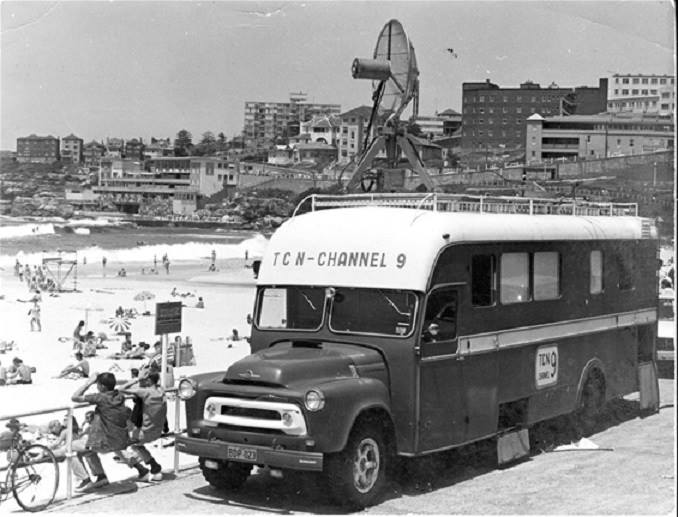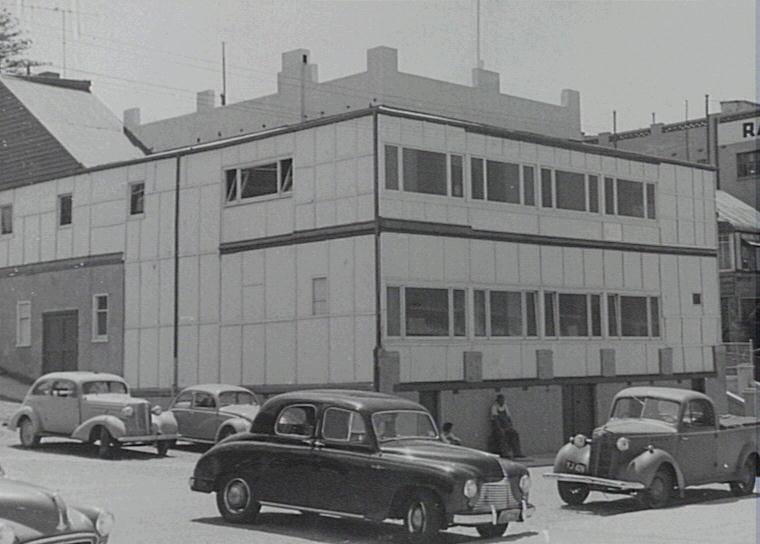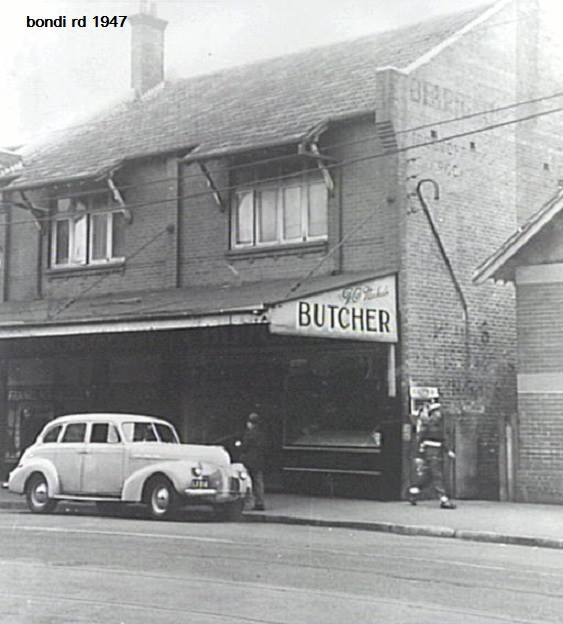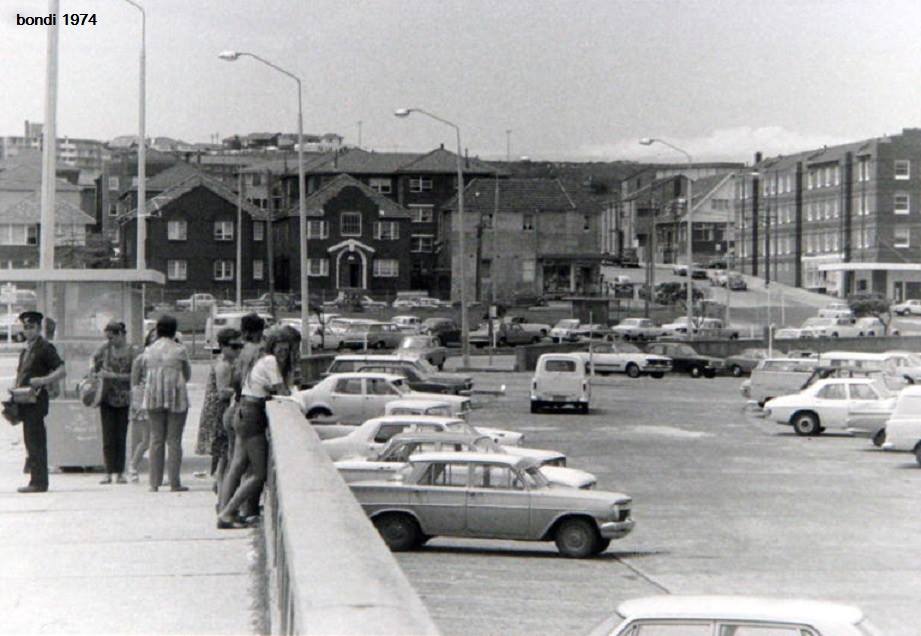An autobiographical account of surf culture at Bondi Beach.



An autobiographical account of surf culture at Bondi Beach.



“Bondi is sacred to many Australians. It is a mecca for international tourists, but how well do we know its history? Professor Doug Booth has comprehensively provided an account of how this beach and its suburb has evolved. It is a remarkable story of struggles to regain beach access for all and to ensure it stays an iconic public asset forever.”
~Emeritus Professor Bruce Thom
Shop 2, 158 Bondi Rd, Bondi, owned by Mrs Turner.
To the adults it was the “Goblin Sweets Shop”. To the children it was “The Lolly Shop”.
There were large glass jars with screw top lids on shelves across the back wall and smaller ones on the counter and they showed the many varieties of lollies which could be bought singularly and placed in small white paper bags. Many of the lollies were 2 or 3 a penny (then changed to decimal cents). These included:
Then there were the chocolates! Mrs Turner had one of the largest ranges of chocolates. They came in “not too deep” cardboard trays covered with clear cellophane wrapping and sold mostly by weight (lbs, pounds, ozs, ounces – pre metric). They were displayed in the glass showcase under the counter. Lots of favourites and many are still available today in speciality shops.
Mrs Turner was well known in the Bondi/Waverley area and loved children coming into the shop, but she was very strict and wouldn’t put up with any misbehaviour. Children that had been well behaved might receive extra sweets in their bags, a broken half lolly, a short end of musk stick or similar.
Lyn Smith, Waverley Historical Society, May 2019.
P.S. Lyn worked in the store in the early 1970s.
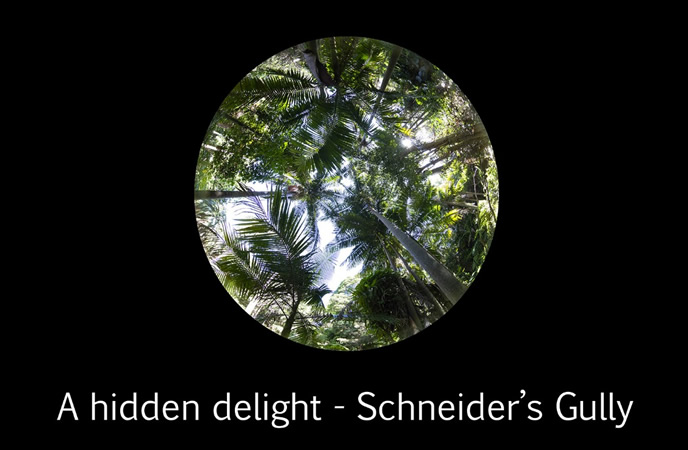
By Andrew Worssam
The Bondi area once featured several creeks and waterfalls, which would occasionally turn into raging torrents, sweeping away roads and property. Nowadays these waterways are tamed, unseen, and buried beneath the ground. Adolph Schneider, a noted German landscape gardener, fought a constant battle against these floodwaters. From 1876, he created a large garden between Martins Ave, Penkivil St and Old South Head Rd, variously named as ‘Schneider’s Glen’ or ‘Schneider’s Gully’. A waterfall ran right into the garden. It was later described by writer Major William “Plugshell” Johnston as “the loveliest natural gully in the district”*. His “scientific and bold treatment” transformed the gully into “a picture”. Schneider built the garden whilst the area was still largely unoccupied and undeveloped (there was a dairy to the East of the garden and then sand dunes to the beach).
The land where the garden would be created was originally purchased by Michael Woolley of T & M Woolley Ironmongers in 1839. The Dickson family (after whom Dickson Park and street is named and whose descendants still live in the area) subsequently purchased the land and sold it to Schneider in 1876. In 1882 a large parcel of the land around the reserve was subdivided and sold off. The advertising copy provided by Hardie and Gorman real estate agents is revealing. Schneider’s Gully became the Bondi Glen. It was envisaged that a tram line would pass right by the subdivision (down Martins Ave, then Glen St) to the beach. The “NEW RECREATION RESERVE” was touted as a major attraction, as were the “Splendid Views” from “BONDI HEIGHTS”.
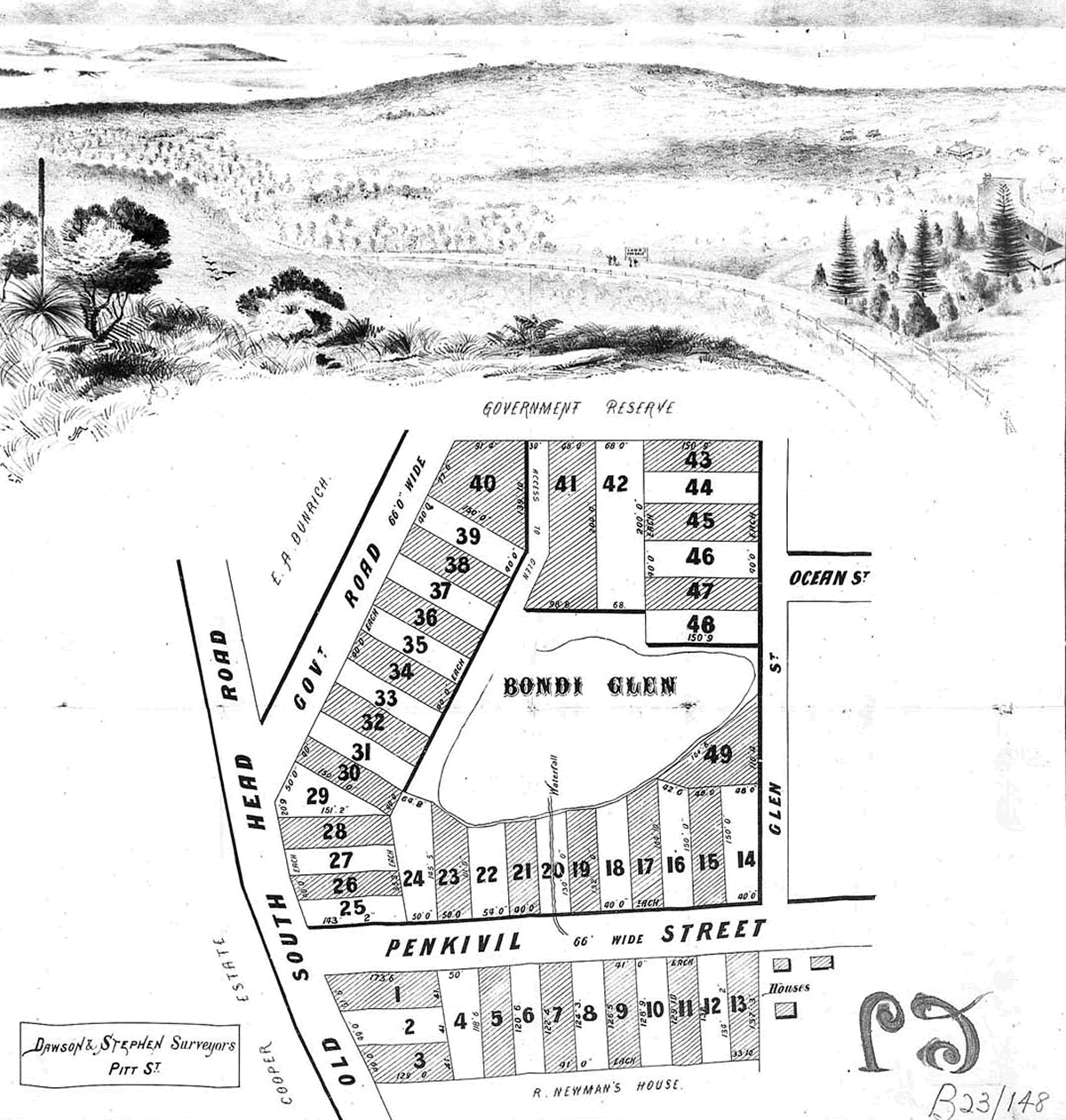
The 1882 Schneider’s Garden subdivision, featuring a sketch of the land from Bellevue Hill, with what is presumably Schneider’s Glen on the right and looking across to Ben Buckler on the left.
In 1885 Mr Alfred Lee purchased a newly built house called Glen Roona (since replaced by the apartment block at 2A Penkivil St) overlooking the Glen. It was a truly grand Bondi residence, featuring a reception room capable of holding 200 people and encompassing most of the Bondi Glen. Lee set about building two tennis courts on the flat land at the bottom of the glen and planting many of the exotic palms that exist there to this day. Alfred Lee was a businessman and book collector (his collection later went to the Mitchell Library). His wife Minnie was prominent in social and philanthropic circles and held many events at Glen Roona. Australia’s prime minister was entertained there in 1939.
Alfred Lee’s grand-daughter Mrs Norah St George Butter recorded her recollections of visiting the garden when she was a child:
“… Anyway I was delighted to get away from the house and into grandfather’s garden. Grandfather as well as collecting books, collected palm trees. His garden wandered from a top lawn down the sides of the hill under huge trees by a winding path and under the huge trees grew a profusion of palm trees. Tall palms reaching the sky down to tiny walking stick palms edged the path and formed romantic clumps of ghostly green. On the corners the path had a few stops and here and there a statue or an urn. About halfway down were several bush houses and even a glass house. The smell was delicious of rotting moulding things and there seemed to be hundreds of pots full of chrysanthemums, orchids and other odd things while over the sheds sprawled a wisteria vine. It was enchanting. At the bottom the garden opened out onto two tennis courts and with sweet peas growing up the vine and trees surrounding them but at a distance…”**
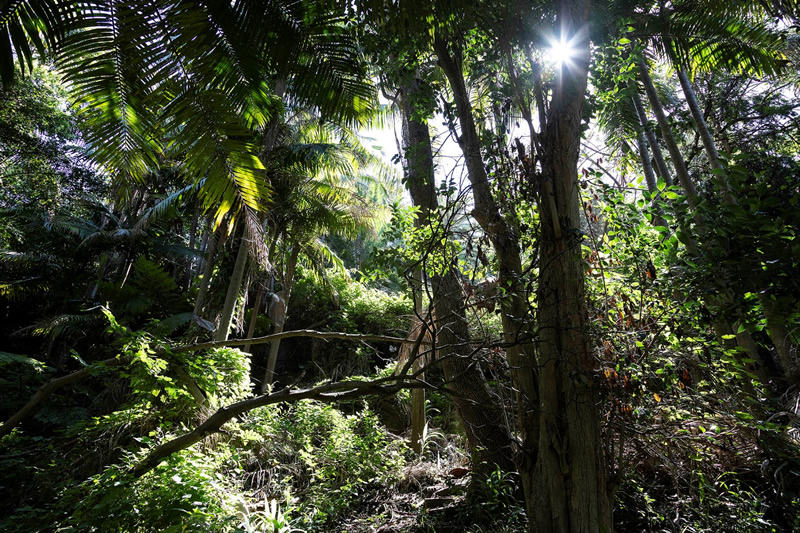
The glen was eventually purchased by Waverley Council for £ 7,000 and renamed the Thomas Hogan Reserve in memory of the former Mayor of Waverley, who lived nearby and died in 1958. In 1924, Johnston had written that ‘Schneider’s Gully’ “retains much of its peaceful solitude, natural beauty and native timber”. Johnston’s words ring true nearly 100 years later, the Thomas Hogan Reserve still provides a quiet, natural respite from the chaos of Bondi.
If you look around the slopes on the Western side of the Thomas Hogan Reserve you can still find remnants of the old winding paths that led from the tennis courts to the Glen Roona house above.
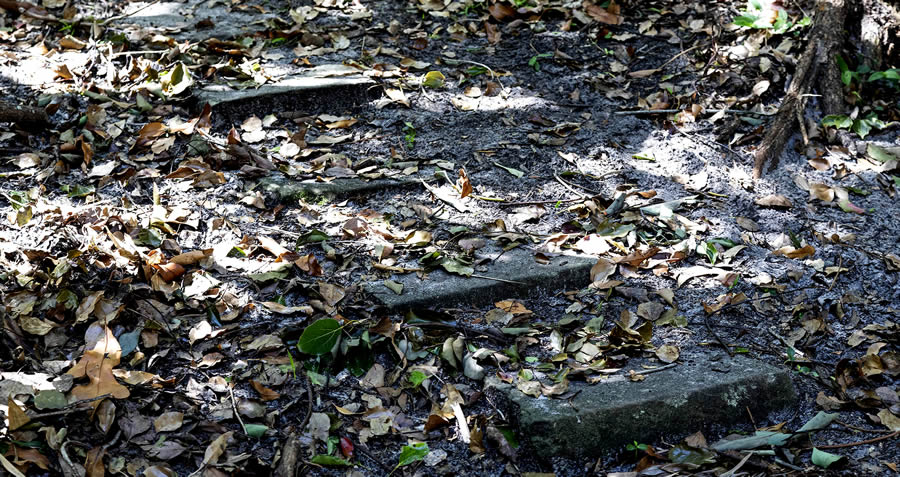
With thanks to John Ruffels and Peggy Dickson.
*Waverley Library Local History Collection, Major Johnston’s Scrapbook pages 20 & 21.
** Notes in the family album Alfred Lee m. Minnie Dodds, State Library Collection
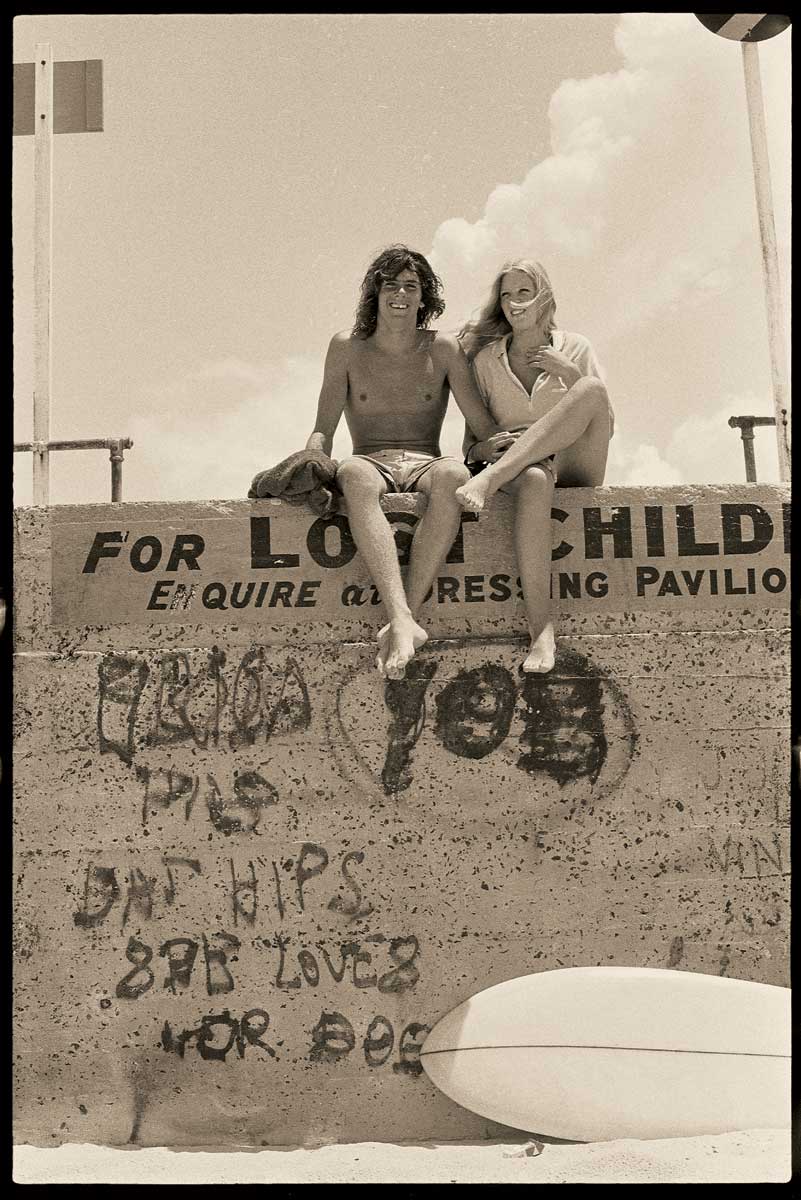
Brad Mayes, Bondi Beach, 1970. Photo: John Witzig.

Frank and Albert “Bung” Coulson (both with heads down, left of centre), James Burke (far right), Victor Coppleson and others. South Bondi, ca. 1910. Photographer: Mortimer C. “Crit” Stevenson.
Hello,
I am the grandson of Frank Coulson (Bondi born and bred), one of the bodysurfers in the picture above. You may have seen the image before, as it has appeared a couple of times on the net, but always as a small image that does not do it justice. I know I am biased due to the family connection but I really believe this is a great shot, considering that it was taken over a hundred years ago, and am hoping that you can find a spot for it on your images page. You have a great site and more Bondi people are likely to see it and possibly fill in some blanks.
The photographer “Crit” Stevenson, was Frank’s brother-in-law, and according to the “family story”, he waded out into the surf with a camera on a pole to keep it above the waves, took the shot and then went over to the nearby rocks and passed the camera to a woman waiting there. The only way I can see him doing this would be to lower the camera, set up the shot, take it and then raise it above the waves again. No Go-Pros on poles in those days!! The image appeared in one of the Sydney papers (possibly the S. M. H.), apparently with attention focusing on the quality of the image, rightly so. We know, as we can clearly see his face, that the man on the far right is James Burke, a great mate of Frank and Albert. The family also say that the two men just left of centre, with their heads down already on the wave, are Frank and Albert but we don’t now who is who. Frank, Albert (“Bung”) and other brother Edward (“Tibby”) were all Life Members of the Bondi Amateur Swimming Club.
Hoping that this might be the earliest photo of bodysurfers in Australia led me to searching the internet, where I soon came across the site surfresearch.com.au which quickly dashed my hopes with an image of bodysurfing from 1905. You most likely know of the site as it has a great deal of data on surf and Bondi. Geoff, who runs the site is also very helpful and a good researcher. This image is also on his site with the information that Dr Victor Coppleson (later Sir Victor) is also one of the swimmers and that the photo was taken in 1912. Victor Coppleson was a very significant figure in the history of Bondi Lifesaving and in Medicine. A large framed print of the image that hangs on my wall has been handed down to me from my grandparents with some data on the back that includes the date of 1908 so there is a little bit of doubt over the date. After Geoff rightly pointed out that family memories are not always reliable, I have been searching archives on the net such as Fairfax, etc., but have had no luck and we have lost contact with Crit Stevenson’s branch of the family a long time ago. I would really love to see the newspaper article featuring this shot.
Like Frank, I also was born in Bondi but moved away at a very young age and am now up here at Brunswick Heads, closer to 70 than to 60. I got my first taste of the ocean down at the Bogey Hole and am still surfing.
Again, excellent site. Great stories, enjoyed the interview with Robert Conneeley.
Regards,
Denis Riek
By Terry Jenkings
Built in the 1920s, The Balconies faced north, toward Ben Buckler, perched above the south end of the beach, where it was cooled by the nor-east, sea breeze. Had it been built at the north end of the beach, exposed to southerlies, it would not have lasted long. By the 1950s, the place had become seedy and run down.
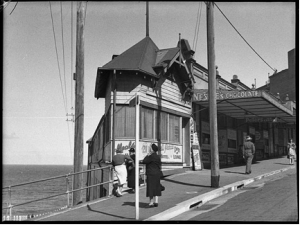
The rooms overlooking the beach housed society’s outcasts. It was locally known that many of the occupants were newly released from gaol. They would spend their days drinking long necks and abusing passers-by or making lewd comments to attractive women. This didn’t seem to bother the locals, who would just walk to the other side of Notts Avenue and let the clowns have their fun, dressed in their uniform of work pants and chesty bond singlets.
Above the derelict rooms was a tea house, which later became The Java Indonesian restaurant. This glassed café seemed to be lopsided, but was popular for its spicy delights, which were foreign to many locals. The views were also spectacular, but not really appreciated, as the windows were covered in salt spray.
Standing next to The Java, facing Campbell Parade, was an insignificant and not all that inviting milk-bar. It serviced people waiting for trams and, later, buses, which were housed at North Bondi. The milk-bar was typical of the times, in that it sold drinks, ice-creams, lollies and the like. The floors were lino and a long counter separated the owner from the customer.
The proprietor in the 1950s was known simply as Jack. His last name was too difficult to pronounce, as was the case with many of the shop keepers who moved into Bondi at that time. Jack was tall with black hair brushed back and held in place with Brylcreem. He always smiled to those waiting for transport and stood erect behind his counter in his white shirt and, in winter, grey cardigan. His constant smile revealed some gold fillings and his greeting was in broken English, but always pleasant. There was something different about Jack because, on close inspection, it was obvious he had been well built in his youth and had the shoulders of a rugby league player, who had perhaps retired a decade earlier. It was said that Jack lived in Francis Street with his wife and daughter, having moved to Australia after the war. His pride and joy was his business and his attractive young daughter, who was originally named Bella, but changed her name to Betty so as to be more Aussie.
One lazy afternoon, two of the outcasts from The Balconies thought they could supplement their financial position by going into Jack’s shop and affecting an old fashion “stand over”. They walked through the entrance and demanded Jack empty his till and give them the cash, or else they would give him a mother of a hiding. The story goes that the smile went off Jack’s face when he understood what they were up to and he suddenly became mean. Jack hurdled his counter and kicked the first guy in the groin, which dropped him. The second guy felt Jack’s massive hand around his throat as Jack lifted him off the ground and above his head. Jack then proceeded to kick the idiot on the ground, holding his groin, along the lino floor to the shop entrance and out onto the footpath. The choking fool was then thrown on top of his crying mate as Jack let out some words of advice. “Come back to my shop and I will kill you.”. They fumbled their way down Campbell Parade, never to be seen again. Jack then turned to the onlookers, smiled and adjusted his cardigan, then returned to his place behind the counter. Not a hair on his head was messed up.
Word spread like wild fire and it became local knowledge that Jack was in fact a war hero. He had been a leader in the European Resistance and operated behind Nazi lines for some years before migrating to Australia with his family.
It is not known what happened to Jack and his family following the demolition of The Balconies, but there was never another attempted “standover“. Passers-by would always return his cheery wave and everyone just pitied any bloke in the future that did the wrong thing by Jack’s daughter.
Mick Marlin took this shot of three of the worst desperadoes ever to paddle out at Rocky Point, pinch all the waves off the Hawaiians, then drop in all over each other.
Bluey, Magoo, Scotty.
Mayes, McGuigan, Dillon.
Scott is still around the mid-north coast somewhere with the best stash of surfboards anybody has ever collected. The other two lads are gone. Magoo last night.
He’s in the middle here; balanced up, bringing it around, full of speed, and squirting a gob full of spray at Mayes who was so help me the noisiest surfer in the southern hemisphere. And as soon as Magoo’s stopped admiring himself in the mirror he taped up on the deck he’ll snake Dillon.
Stick a bunch of mates in good waves and this is what you get.
Rest in Peace Barry.
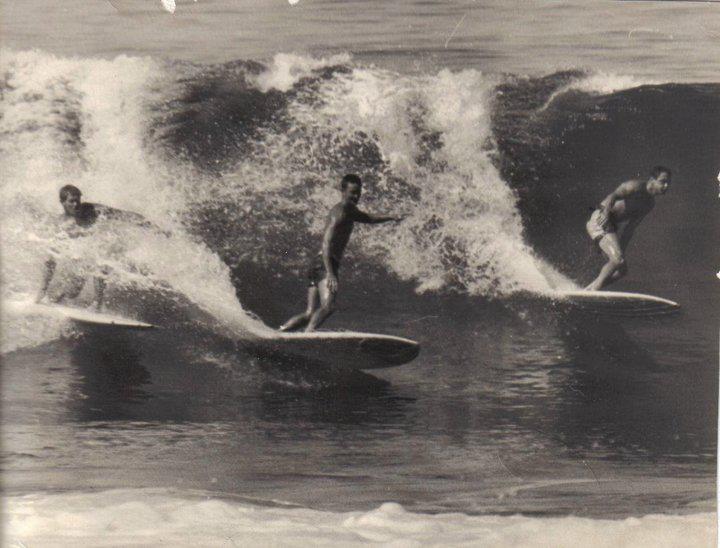
Some real pearlers here. Thanks Pete!
George Samios holds the world’s best cache of old Bondi pics – he runs them past a crew of no-hopers who make up the Old School Bondi Crew Facebook site, that’s only the men mind, the ladies are all the same age they were when they were driving us no-hopers crazy.
I’ve pinched his pics, and collected them here.
All in the one spot.
George, that’s him on the wrong side of the motor vehicle down there, I’m told, will keep them coming.
Nobody needs captions, not when we all walked the same streets.
